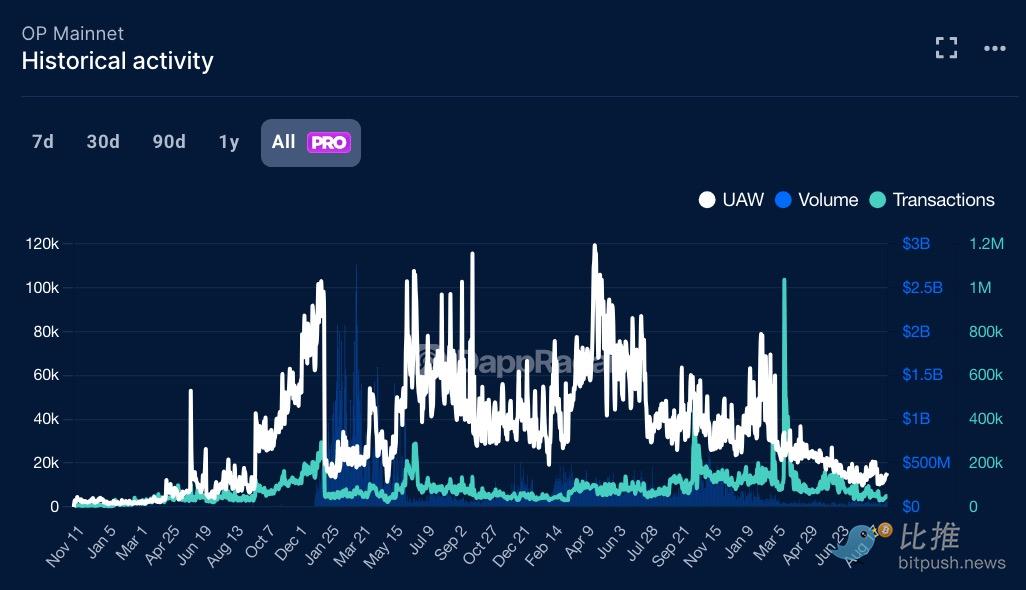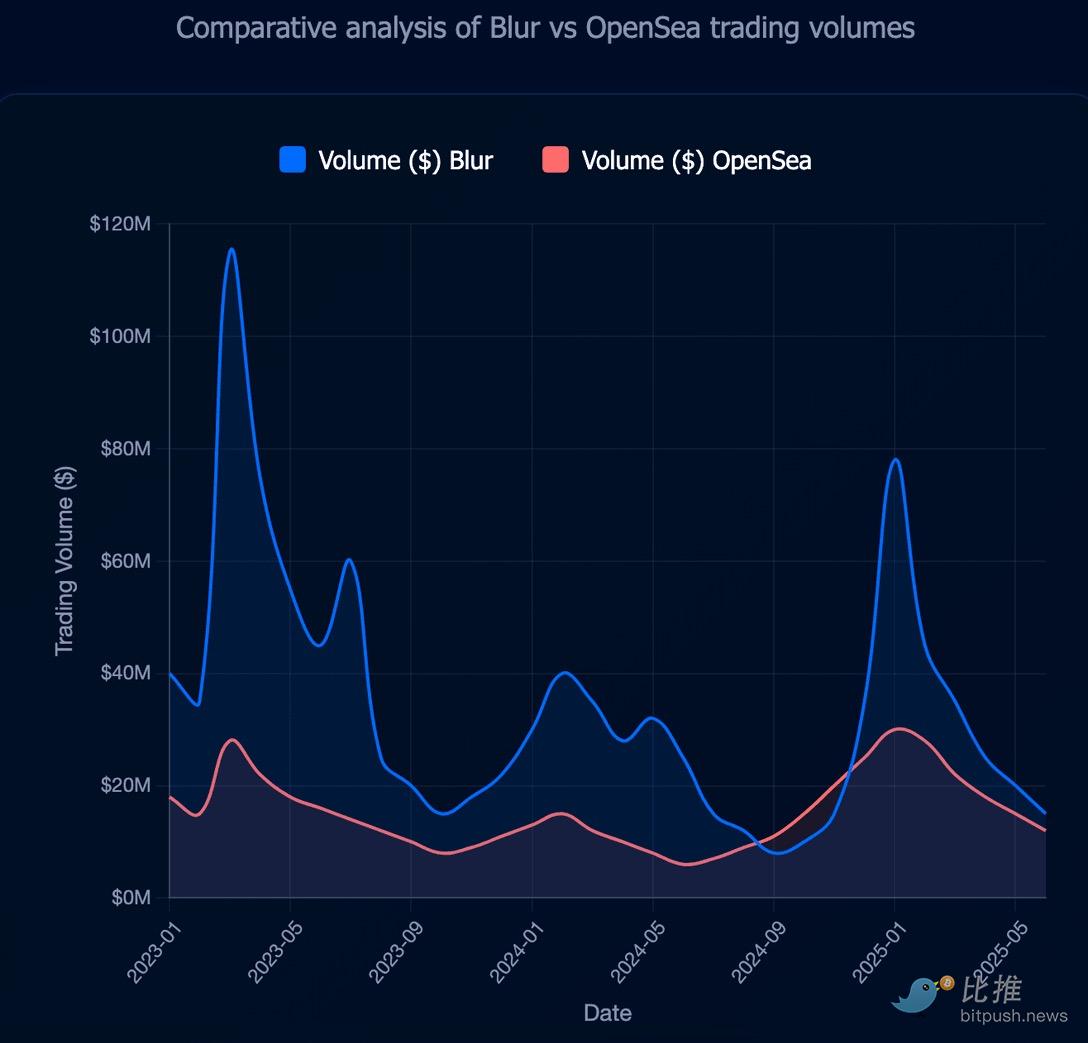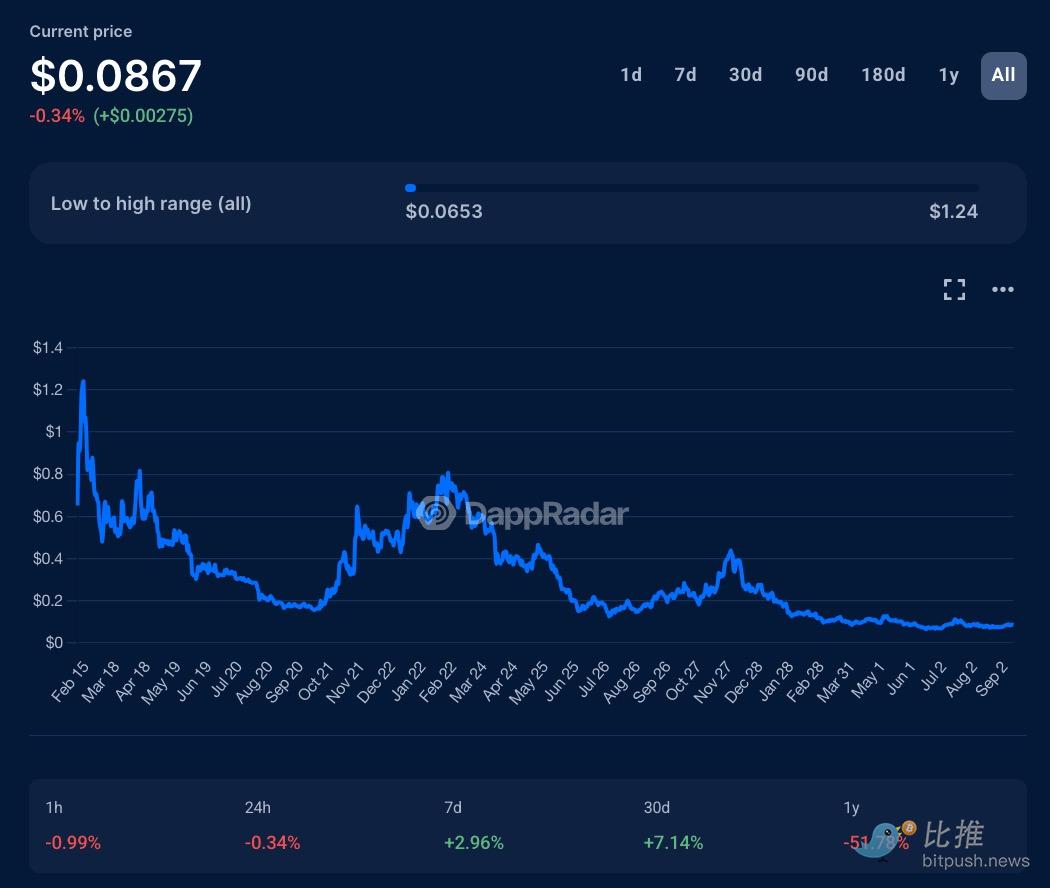Written by: Sara Gherghelas
Translated and Compiled by: BitpushNews
Although the impact of airdrops on user growth and attention has changed the Web3 ecosystem, whether they can create a lasting ecosystem or merely trigger short-lived speculative activities remains a focal point of interest.
Airdrops have become one of the most powerful growth tools in Web3, capable of generating massive attention and attracting millions of users in just a few days. Over the past two years, projects in areas such as decentralized finance (DeFi), non-fungible tokens (NFTs), and blockchain gaming have distributed tokens worth billions of dollars to reward early adopters and attract new participants.
However, the real question is: do these distributions create a lasting ecosystem, or are they merely short-lived speculative activities? While airdrops continue to drive astonishing spikes in user growth and trading volume, their long-term impact on retention, engagement, and token value is far less certain.
This report analyzes the outcomes of high-value airdrops in the DeFi, NFT, and gaming sectors, focusing on how they affect user behavior, token performance, and on-chain activity.
Key Takeaways
- Since 2017, projects have distributed over $20 billion in airdrop tokens, with $4.5 billion in 2023 alone, making airdrops one of the most powerful yet expensive growth strategies in Web3.
- 88% of airdrop tokens lose value within three months, highlighting the gap between short-term hype and long-term sustainability.
- Airdrops can reliably generate massive activity spikes: Arbitrum saw daily trading volume reach 2.5 million at launch, while Blur captured over 70% of NFT trading volume overnight.
- Retention remains a weak point: on average, activity levels fall back to about 20% to 40% higher than pre-airdrop levels within weeks, with most claimants opting to cash out.
1. What are Airdrops? How do they Shape Web3 Growth?
In the Web3 ecosystem, airdrops refer to the distribution of free tokens to a set of wallets, typically to reward past activity or incentivize future participation. Unlike initial coin offerings (ICOs) that require users to purchase tokens, airdrops place tokens directly in users' hands. The basic logic is simple: by relinquishing ownership, projects can guide communities, decentralize governance, and create instant liquidity for their tokens.
Airdrops come in different forms:
- Retroactive Airdrops: Reward users who have interacted with the protocol in the past (e.g., Uniswap in 2020, Arbitrum in 2023).
- Incentive Airdrops: Encourage ongoing behaviors such as trading, staking, or referrals (e.g., Blur's points system).
- Community Airdrops: Reward NFT holders, developers, or members of social communities (e.g., BONK on Solana).
- Since 2017, airdrops have evolved from a quirky way of spreading news to one of the most effective marketing strategies in Web3. Projects no longer pay for advertising but distribute ownership.
The idea is that users who feel like stakeholders are more likely to try the product, spread the word, and remain loyal.
Key milestones in the history of airdrops:
- 2017–2018, First Wave: The first appearance during the ICO era. Many projects used airdrops to cheaply expand Telegram groups and wallet addresses. The impact was mostly speculative, with few users continuing to engage after claiming.
- 2020, UNI Gold Standard: Uniswap's $UNI airdrop set the gold standard. By distributing 400 UNI (worth about $1,200 at the time, peaking over $12,000) to every historical user, Uniswap turned early adopters into evangelists. It also established retroactive airdrops as a fair way to reward "true believers."
- 2021–2022, Airdrop Strategy Manual Era: Airdrops became part of the strategy manual: dYdX, ENS, LooksRare, etc., used them to attract traders, domain service users, or NFT collectors. Some projects succeeded, while others were overwhelmed by "farmers."
- 2023–2025, Super Airdrop Era: Arbitrum ($1.97 billion), Blur ($818 million), and Worldcoin (continuously airdropping to over 10 million users) demonstrated how large-scale distributions can change entire ecosystems overnight.
While precise tracking is challenging, estimates show:
- Since 2017, there have been hundreds of airdrops in the DeFi, NFT, gaming, and infrastructure sectors.
- The total value distributed through airdrops exceeds $20 billion, with $4.5 billion in 2023 alone (including Arbitrum, Blur, Celestia, etc.).
- Major airdrops typically target 100,000 to 1 million addresses, while global initiatives like Worldcoin aim for tens of millions of users.
- Research indicates that about 88% of airdrop tokens lose value within three months of launch, highlighting that while airdrops are successful as marketing activities, they rarely ensure long-term token strength.
Why do airdrops work as a marketing tool?
- Low barrier to entry: Users claim free tokens → try the product.
- Word-of-mouth effect: Large airdrops become headlines ("free money"), generating viral spread.
- Decentralization: Tokens spread ownership, empower users with governance rights, and (at least theoretically) align them with the project's future.
- Competitive pressure: Airdrops can quickly shift market share (e.g., Blur against OpenSea).
However, they also come with challenges: airdrop farming, immediate sell-offs, and retention dilemmas. Nevertheless, by 2025, airdrops will still be one of the most effective, albeit imperfect, marketing weapons in the dapp industry.
2. DeFi and Layer-2 Airdrops: Are They Driving User Growth or Feeding "Farmers"?
The DeFi sector has been at the core of the airdrop phenomenon. From decentralized exchanges to Layer-2 scaling networks, various protocols use token distributions to reward early users, decentralize governance, and most importantly—attract new users. In fact, the largest and most discussed airdrop cases in Web3 history mostly originate from DeFi and network scaling solutions.
L2 Network Airdrops
The most notable case is Arbitrum's airdrop in March 2023. By distributing 1.16 billion ARB tokens (about 11.6% of its total supply) to over 600,000 addresses, Arbitrum created the highest-value airdrop in the industry at the time. At its peak, these tokens were worth nearly $2 billion. The on-chain impact was immediate: on the day of the claim, daily trading volume surged to over 2.5 million, briefly surpassing Ethereum itself.

Although the hype inevitably cooled, Arbitrum still maintained a higher activity baseline than before the airdrop. Two months later, the network was still processing about one million daily transactions, with unique active wallets (UAW) increasing by 531%. However, the retention story is more complex. Our data shows that during this period, only about 5% of transactions came from wallets that actually received ARB. Many claimants simply sold the tokens and left, while real usage was driven by new users attracted to Arbitrum's continuously growing ecosystem or existing DeFi users. Unsurprisingly, the ARB token itself followed a familiar pattern: after launching around $1.30–$1.40, it dropped over 75% within two years.
Optimism provides a useful comparison. It opted for a phased airdrop rather than a one-time large-scale event. The second wave of airdrops in 2023 distributed 11 million OP tokens, targeting governance participants such as DAO voters and representatives. Compared to Arbitrum, this approach generated smaller activity spikes but more purposefully aligned incentives, strengthening Optimism's governance structure. Our data confirms that Optimism also experienced a sharp increase in UAW and trading volume during the claim period, although activity faded more quickly. The OP token has lost 42% of its value since its launch three years ago.

DeFi Airdrops
DeFi protocols followed a similar pattern to L2 networks. dYdX's early airdrop to active traders created a surge in trading volume, but once incentives decreased, activity also declined, and its token subsequently lost about 70% of its value. 1inch distributed multiple waves of tokens, driving short-term wallet growth, but governance participation remained low; the token dropped 52% shortly after the airdrop and fell over 90% five years later. ENS's smaller retroactive airdrop at the end of 2021 performed better, with its token only dropping about 40% over four years, while cultivating a relatively loyal governance community among Ethereum domain holders.
Across the industry, data shows a consistent pattern. Airdrops drive immediate user growth, often doubling or tripling daily activity, accompanied by a surge in total value locked (TVL) as users move assets to qualify for or claim tokens. However, within weeks, activity levels typically fall back to a baseline that is only slightly higher than before. Token prices corroborate this: most DeFi airdrop tokens lose 60% to 90% of their issuance value within months as "farmers" exit their positions.
Airdrops are unmatched in accelerating user acquisition, but long-term retention depends on product-market fit. Arbitrum's ability to maintain high usage levels stems from its network providing strong DeFi utility and lower costs. Optimism, on the other hand, demonstrated how designing airdrops around governance can shape user behavior beyond speculation. However, for protocols lacking compelling ecosystems or thoughtful designs, airdrops are at best an expensive marketing campaign that enriches opportunistic claimants without ensuring lasting adoption.
3. NFT Airdrops: Trading Liquidity vs. Community Loyalty
If DeFi and Layer-2 networks utilize airdrops to expand infrastructure, the NFT sector uses airdrops as a weapon to capture market share. Blur is the best example, as this trading platform disrupted OpenSea's long-standing dominance through one of the most aggressive airdrop strategies in Web3 history.

Before the token launch in February 2023, Blur conducted months of "quarterly" rewards, allowing traders to accumulate points by listing NFTs, providing liquidity, and demonstrating platform loyalty. When the BLUR token finally launched, 51% of its total supply was allocated to the community, with the airdrop valued at over $800 million at its peak. The result was immediate and dramatic. Blur captured over 70% of Ethereum's NFT trading volume within days, forcing OpenSea to cut fees and reconsider creator royalties. Our data shows the speed of liquidity transfer; despite serving fewer active wallets, Blur's trading volume was sometimes more than five times that of OpenSea.
However, the nature of this activity tells a cautionary tale. Most of Blur's trading volume was driven by a small number of high-frequency traders who were farming points for future rewards. Analysis at the time showed that hundreds of wallets accounted for the majority of trades. While this created unprecedented liquidity, tight spreads, and faster execution for NFTs, it did not necessarily translate into broader community engagement. OpenSea continued to dominate in terms of unique active wallets, favored more by casual collectors and creators.
The BLUR token itself followed a familiar trajectory. It debuted at around $1.20 but quickly fell as claimants sold off, dropping below $0.10 by 2025. Even ongoing quarterly rewards failed to prevent the gradual erosion of value. By the end of 2023, Blur's market share also began to decline, stabilizing in the range of 20% to 40% after the initial surge.

Other NFT airdrops tell a similar story. LooksRare and X2Y2 also executed "vampire attack" models in 2022, distributing tokens to OpenSea traders. Both briefly gained significant trading volume, but much of it was wash trading. Once the rewards dried up, activity quickly plummeted. Tokens that were once worth hundreds of millions are now trading for only a fraction of their peak value. Recently, meme coin-style NFT airdrops like Memecoin ($MEME) briefly sparked collectors' enthusiasm but failed to sustain any lasting ecosystem.
The key lesson from NFT airdrops is that while they are very effective at transferring liquidity, they face challenges in creating sticky communities. Traders will chase rewards, but collectors and creators seek trust, usability, and cultural relevance—factors that cannot be achieved solely through tokens.
By 2025, the NFT trading market landscape will be more competitive than ever, influenced by these airdrops. OpenSea has adopted new professional trading tools, Blur continues to serve professional traders, and other platforms are experimenting with new models. But the fundamental question remains: can token incentives in the NFT market truly foster sustainable communities, or do they merely fuel temporary liquidity wars?
4. Game Airdrops: Limited Impact in the Play-to-Earn World
While DeFi and NFT platforms have turned airdrops into billion-dollar marketing campaigns, the gaming sector has been more cautious. Blockchain games typically focus on in-game economies and NFTs rather than large-scale token giveaways. As a result, there have been fewer high-value game airdrops in the past two years, and their impact has been more fleeting compared to DeFi or NFT trading markets.
Most other blockchain game projects have completely avoided major retroactive airdrops. Instead, they rely on Launchpads, NFT minting, or in-game earning rewards to distribute tokens. This strategy reflects the lessons learned from the 2021 Play-to-Earn craze, when inflationary token economies collapsed under speculative pressure. By 2023–2025, developers seem concerned about repeating the mistakes of distributing large amounts of tokens without sustainable mechanisms.
Some exceptions exist at the infrastructure level. Immutable, Polygon, and Ronin have experimented with incentives and token rewards for game developers and players, but these structures are all ongoing reward programs rather than one-time airdrops. Similarly, smaller game studios distribute NFTs or moderate token airdrops to closed beta users, rewarding early participation without impacting their economic systems.
For games, the real challenge is not guiding users with tokens but keeping them entertained long enough to form a lasting ecosystem.

Conclusion
Although 88% of airdrop tokens lose value within months, each airdrop reaffirms the same fact: in the Web3 world, attention is the most precious currency. Each large-scale token distribution proves that the real value lies not in the tokens themselves but in the user behavior they can leverage. The challenge facing projects today is no longer how to attract attention but how to convert traffic into sustainable ecological communities.
免责声明:本文章仅代表作者个人观点,不代表本平台的立场和观点。本文章仅供信息分享,不构成对任何人的任何投资建议。用户与作者之间的任何争议,与本平台无关。如网页中刊载的文章或图片涉及侵权,请提供相关的权利证明和身份证明发送邮件到support@aicoin.com,本平台相关工作人员将会进行核查。




